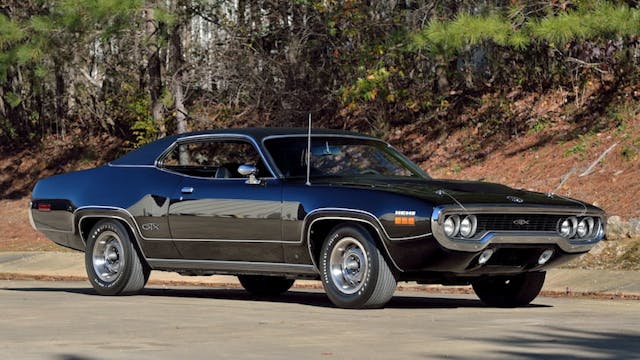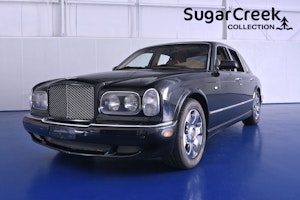Media | Articles
The 1971 Plymouth GTX is bucking muscle car market norms

For many muscle car aficionados, the ’68–70 Mopar B-body is the standard-bearer for the class. That single platform gave birth to the Dodge Charger and Super Bee, the Plymouth Road Runner and GTX, plus the less flashy Dodge Coronet, Plymouth Belvedere, and Plymouth Satellite. (All of which could be optioned with potent big-block power.) The 1971 redesign of the B-body gave these vehicles a bit of a plus-sized pony car look, with low rooflines and short decks that resulted in a sleek profile. However, this new style also left a lot of the muscle-era looks and Coke-bottle styling behind, which cost the platform plenty of fans.

We reported late in 2019 that the Plymouth Satellite Sebring was one of the few muscle cars that was gaining ground with younger buyers. Now, it seems that the model’s more performance-oriented versions—the Road Runner and GTX, but particularly ’71 models—are gaining in value while most of the muscle car market remains rather stagnant.
Over the last two years, in fact, ’68–70 GTX models have experienced essentially no change in value. Meanwhile, non-Hemi 1971 models are doing quite well, and the Hemi cars specifically, as expected, continue to hold their value.
The median #2 (Excellent) value for the Hemi-powered ’71 GTX is $139,000, up 32 percent over 10 years but has been flat over the last two years. Meanwhile, the 440-powered cars, particularly the 385-hp Six Barrel, has been closing the gap in the last 24 months, increasing the average value for median #2-condition (Excellent) cars by 18 percent to $100,000. The 370-hp four-barrel saw a 10 percent increase over that same time frame.

The triple-black Hemi four-speed you see here recently sold at Mecum’s Kissimmee event for $192,500. In typical muscle-car fashion, there’s more demand for four-speed cars; and three pedals and four speeds tend to add 10 percent to the price. And, because it’s a Mopar with wild color options, the color can play an important role in what you pay. The triple-black spec didn’t stand to help this car too much in that department, yet its rarity no doubt made it a big draw for collectors.
Marketplace
Buy and sell classics with confidence
Hagerty Valuation expert Andrew Newton points out that this was just one of 11 GTX coupes that came with the four-speed and the top powertrain. He adds: “This car’s drivetrain makes it a standout. It sold for $140,400 at Mecum Indy in 2015, so this result is even stronger (and at the very top end of GTX values) despite the restoration being six years older. Hemi GTXs don’t grow on trees, though, so anyone would be hard-pressed to find another real-deal car in any condition.”

So, while these cars were slow to catch on, it seems that they have cemented their spot in the pantheon of muscle cars; collectors are finally embracing them.
Some notable data points suggest a bright path ahead, as well. Looking at the demographics of these GTXs, baby boomers make up the lion’s share for now, but these cars are more popular among younger buyers than most collector vehicles of this vintage. When it comes to healthy values, support from younger generations ensures longevity. If GTXs turn out to be the dark-horse muscle car for future car collectors, it’ll be a big reversal of fortune for these once-neglected Mopars.












